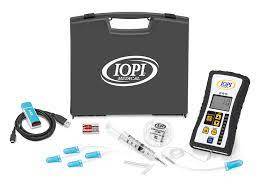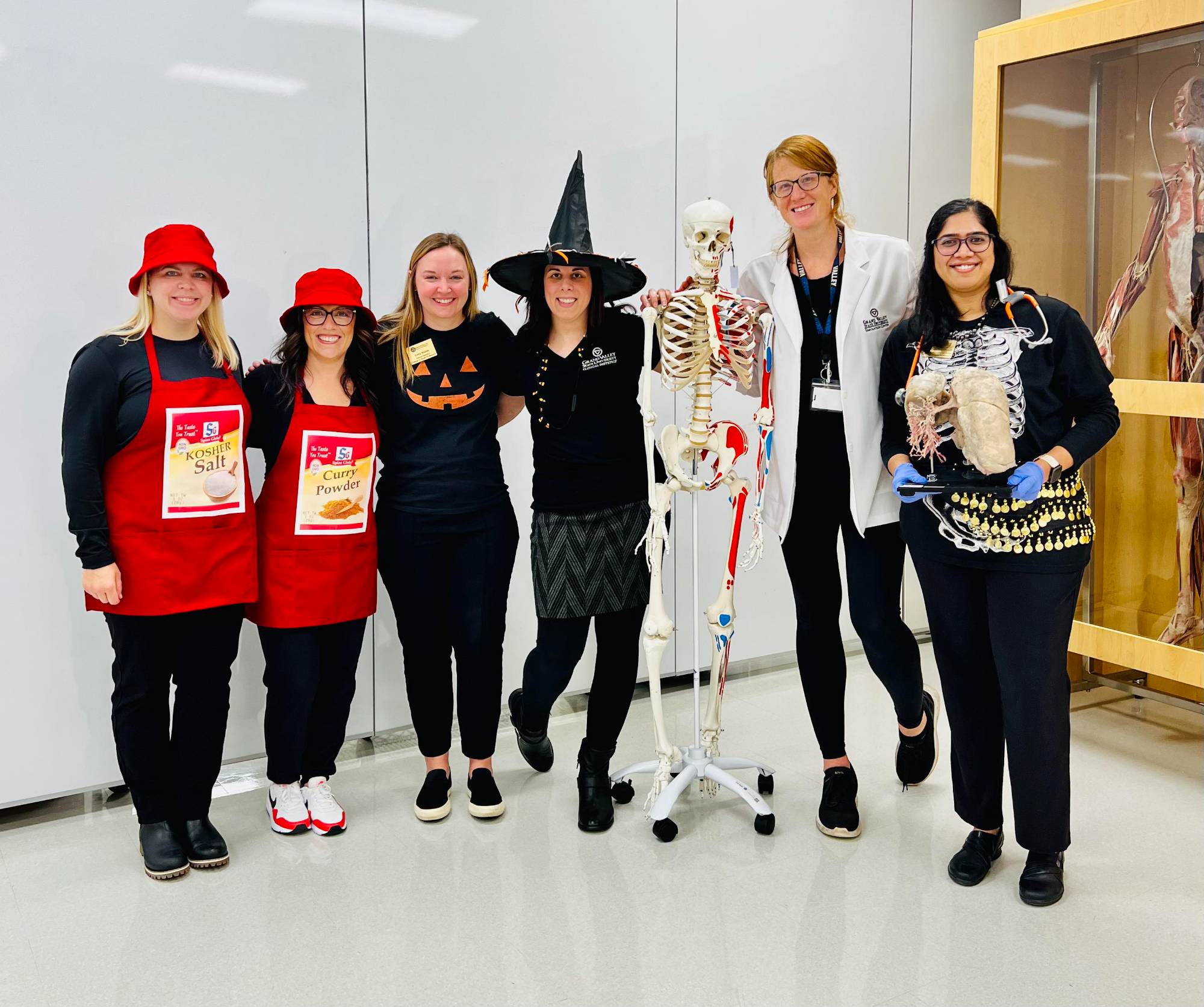Deglutition Projects

A Pilot Study on Tongue Pressures of Geriatric Population [Yet To Start]
The significance of this project is to compare the tongue strength and endurance levels between the two age groups, younger and older, and compare the factors contributing to the risk of developing dysphagia in the latter group. This project will also contribute to the objective measurements of tongue and lip endurance and strength, which can be used in clinical practice and application, by comparing the data collection protocols used in the previous research data. Finally, this research project may identify the risk factors associated with presbyphagia that could contribute to reducing tongue strength and endurance. This knowledge can be used for preventive strategies and interventions to maintain a safe and efficient swallowing in aging population.
Student Investigator: Rylee Davis, B.S. Communication Sciences and Disorders Senior

Swalloween Awareness 2023
Interprofessional Team-Based Learning in Dysphagia Management (ongoing)
The purpose of this study is to evaluate the effectiveness of hybrid dysphagia interprofessional labs for students in healthcare disciplines, level of preparedness, and knowledge, while working with individuals with dysphagia and other care team members.
Collaboration
Dr. Ashley McKnight, DrOT, Occupational Science and Therapy, GVSU
Ms. Lisa VanDyken, M.S., Clinical Simulation and Resource Specialist, GVSU
Prof. Randalynn Hajek, M.P.H., RDN., Clinical Dietetics, GVSU
Prof. Kelsey Jewett, M.S., OTRL, Occupational Science and Therapy, GVSU
Prof. Nichole Anguilm, M.S., RDN, Clinical Dietetics, GVSU
Prof. Emily Welles, M.S., RDN, Clinical Dietetics, GVSU
Dr. Barbara Hooper, D.N.P., M.S.N., RN., CHSE., Nursing, GVSU
SLP Labs
[1640223991].jpg)
Oral Mech and Cranial Nerve Exam

Pre- and Post-Vitals Monitoring

3-Oz Water Testing Using the Yale Swallow Protocol

Oral swallow trials using 3-finger test

Oral reside checks post-swallow

Working in interprofessional teams
OT Labs

Positional Strategies Based on Seating System

Feeding Adaptive Devices to Maximize Independence and Safety

Oral Care and Hygiene with a Demo Using Suctioning System

Practicing feeding positioning in wheelchair

Interprofessional team working on oral care

OT instructor displaying weighted and comfort grip utensil
Dietetics Labs

IDDSI Diet Preparation and Testing

Bolus Feedings using 60-cc Syringes

NG Tube Insertions Using Manikins

IDDSI Flow Test using 10-cc Syringe

Dietetics Instructor Discussing on Enteral Feeding Gravity Set

Interprofessional group enjoying thickened drink tasting

Hybrid Simulation: Using Student-Directed, High-Fidelity Remote Labs, and Standardized Patients in the Clinical Education of Dysphagia Intervention (Ongoing)
This project attempts to prepare future speech-language pathology clinicians on dysphagia management. Hybrid simulation techniques will be used to practice a comprehensive clinical bedside swallow exam in a simulated inpatient medical setting on a standardized patient with a swallowing difficulty along with working with a team of standardized patients portraying patient, family member, nurse, and physician to diagnose and intervene a swallowing disorder through a patient-centered interprofessional collaborative care model. The follow up lab will be to provide teletherapy services for dysphagia in a simulated home setting.
Collaboration
Douglas Ayers, B.S.N., R.N., Simulation Coordinator, GVSU
Kelly Klerk, Ed.S., Multimedia Coordinator, GVSU
Lisa VanDyken, M.S., CCC-SLP, Clinical Simulation and Resource Specialist, GVSU
Ty Rizer, Simulation Emerging Technology Developer, GVSU
Andrew Booth, DHED., PA-C., Physician Assistant Studies, GVSU
Impact of Intellectual Disability and Challenging Behaviors on Performing Clinical Swallowing Assessment and Intervention (ongoing)
The purpose of this study is to identify a few barriers related to intellectual disability and challenging behaviors in preventing the speech-language pathologists to incorporate specific assessment components and successfully implement recommended treatment plans.
Collaboration
Melissa Farrow, M.S., CCC-SLP, BCS-S
Texas Health and Human Services' Health and Specialty Care System

